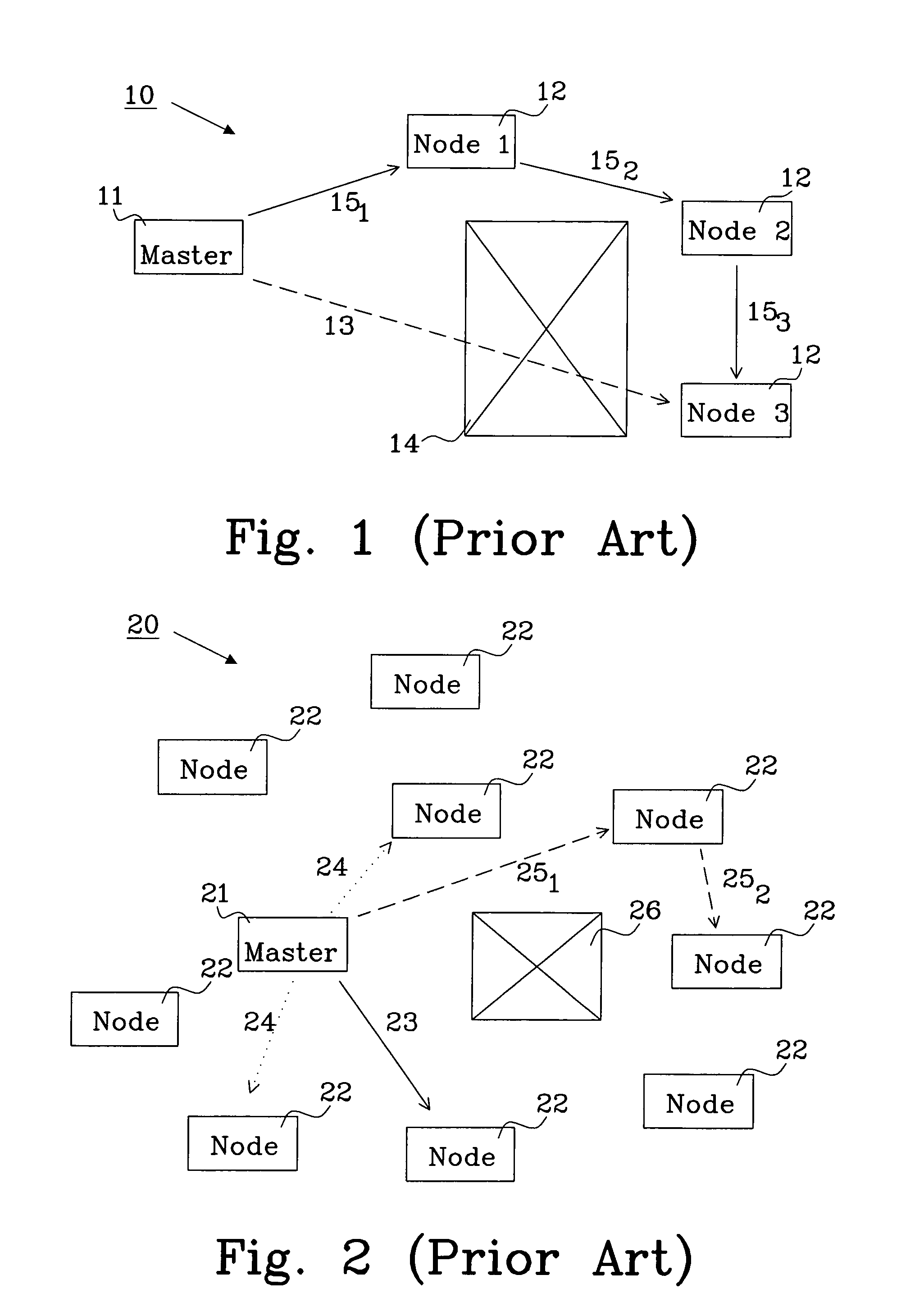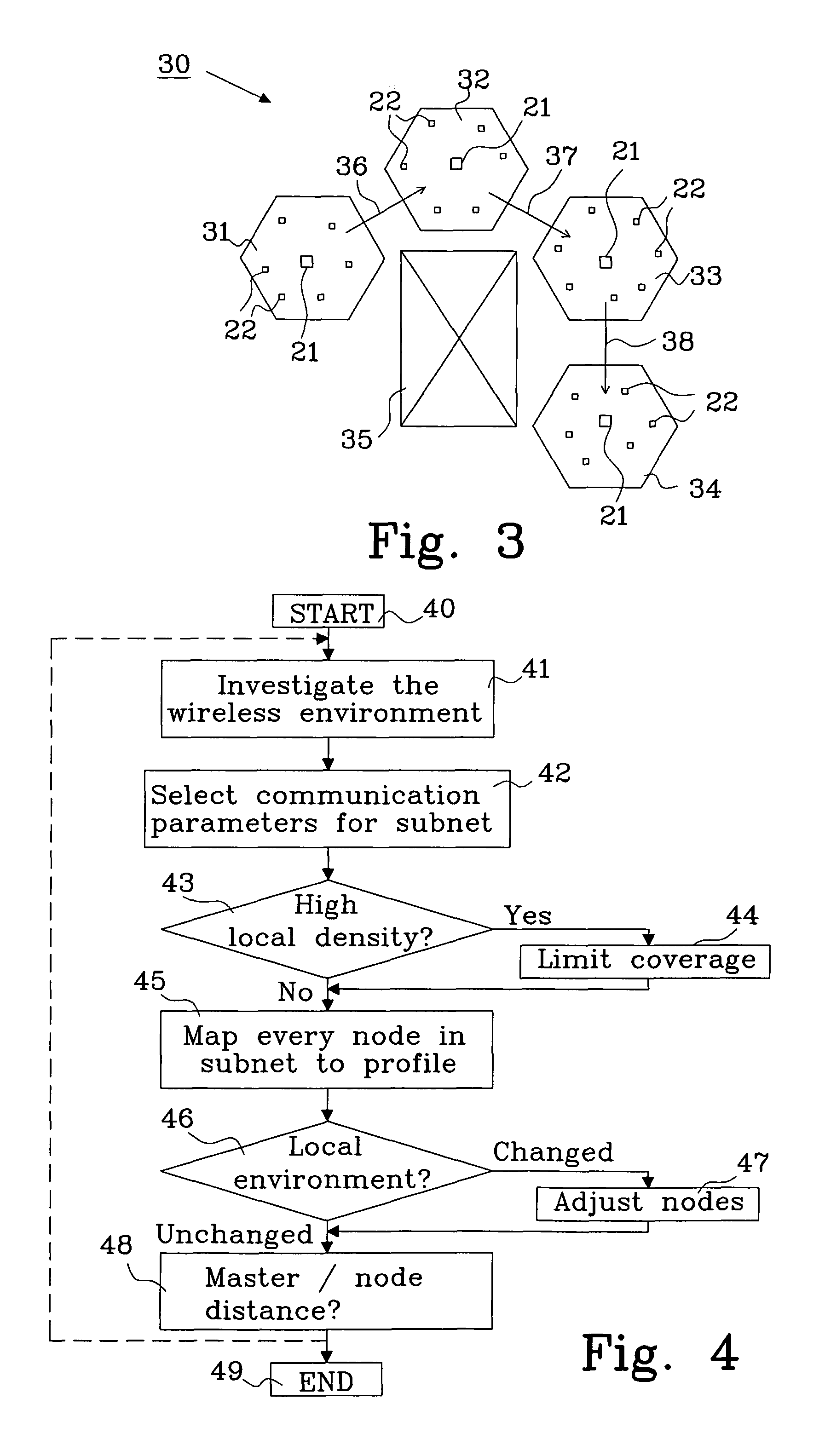Wireless network
a wireless network and wireless technology, applied in the field of wireless networks, can solve problems such as interference, interference, and disruption of communication, and achieve the effects of reducing interference risk, maintaining or increasing throughpu
- Summary
- Abstract
- Description
- Claims
- Application Information
AI Technical Summary
Benefits of technology
Problems solved by technology
Method used
Image
Examples
example
[0052]Two subnets, subnet 31 and subnet 32, shall communicate.
[0053]Each neighboring subnet uses a unique set of communication parameters for internal subnet communication. Subnet 31 uses communication parameters A, B, C and subnet 32 uses communication parameter C, D, E. The communication between subnet 31 and 32 is performed using the union of both which is parameter C, i.e. the common communication parameter. In this example, communication parameters A-E may be exemplified as five different frequency ranges, wherein the common frequency range “C” illustrate a common communication channel in the frequency domain being shared by subnet 31 and 32. The frequency ranges “A” and “B” illustrate two communication channels in the frequency domain available for internal communication in subnet 31, and the frequency ranges “D” and “E” illustrate two communication channels in the frequency domain available for internal communication in subnet 32.
[0054]A subnet that is a part of a wireless ne...
PUM
 Login to View More
Login to View More Abstract
Description
Claims
Application Information
 Login to View More
Login to View More - R&D
- Intellectual Property
- Life Sciences
- Materials
- Tech Scout
- Unparalleled Data Quality
- Higher Quality Content
- 60% Fewer Hallucinations
Browse by: Latest US Patents, China's latest patents, Technical Efficacy Thesaurus, Application Domain, Technology Topic, Popular Technical Reports.
© 2025 PatSnap. All rights reserved.Legal|Privacy policy|Modern Slavery Act Transparency Statement|Sitemap|About US| Contact US: help@patsnap.com



